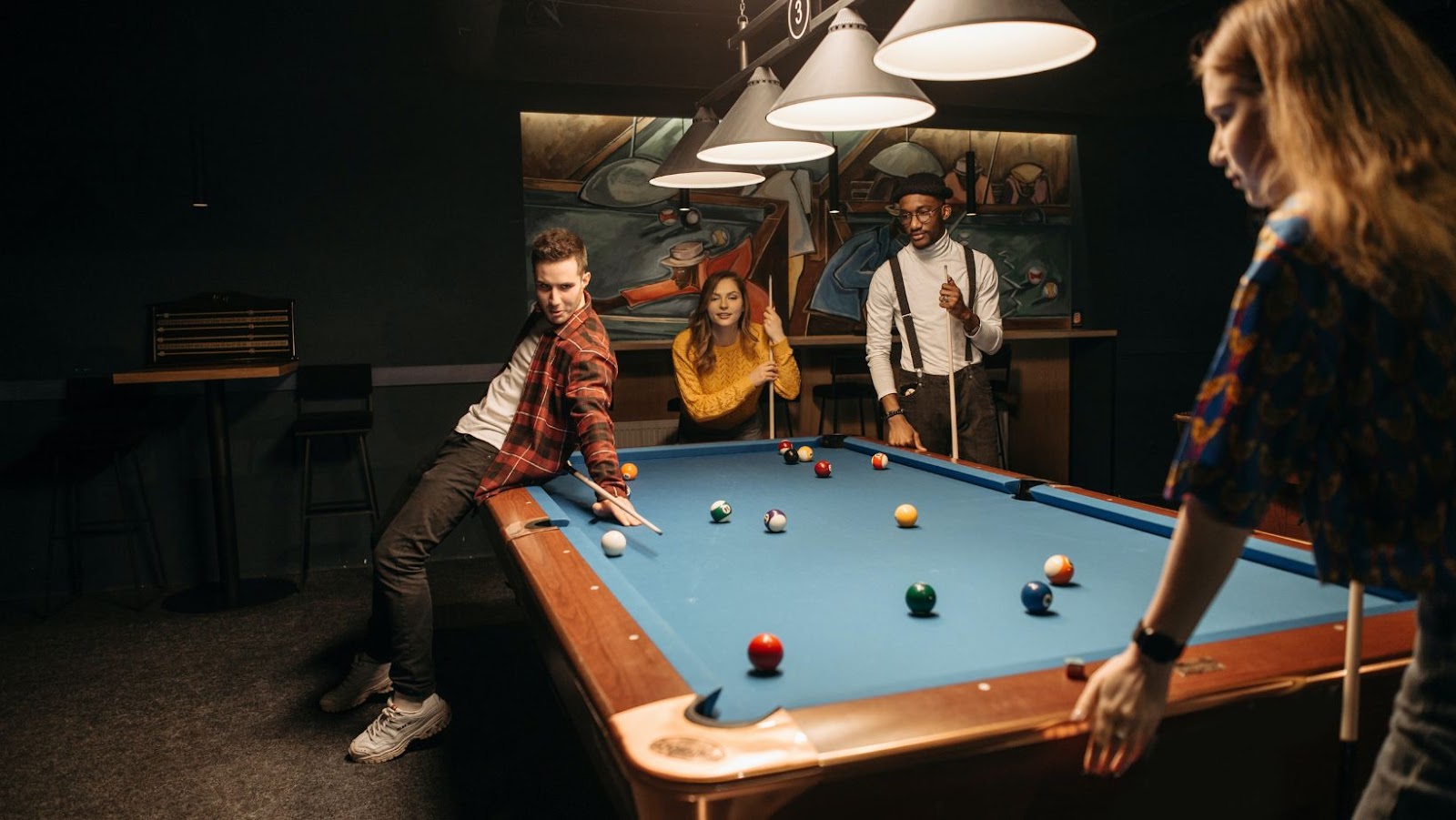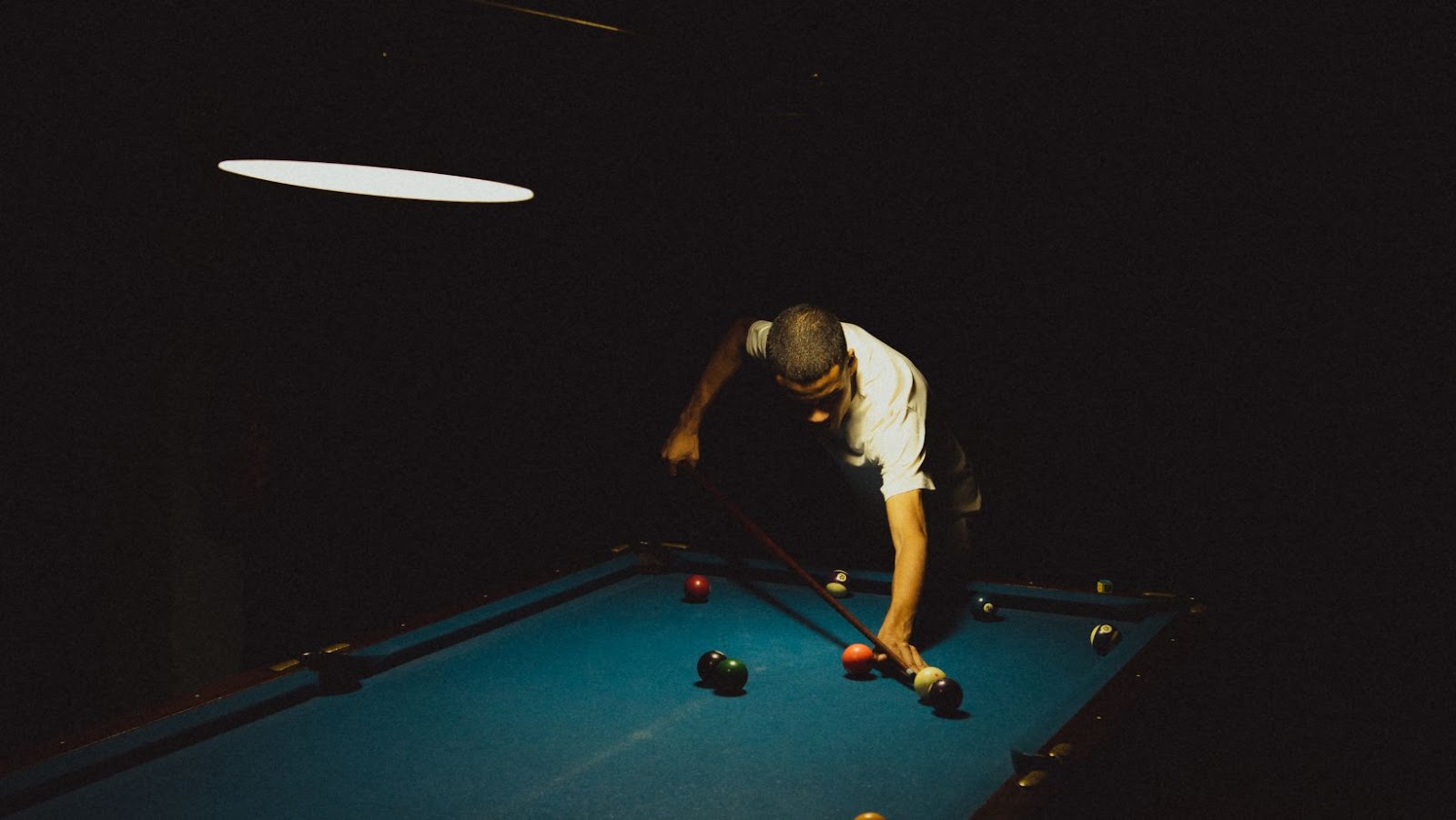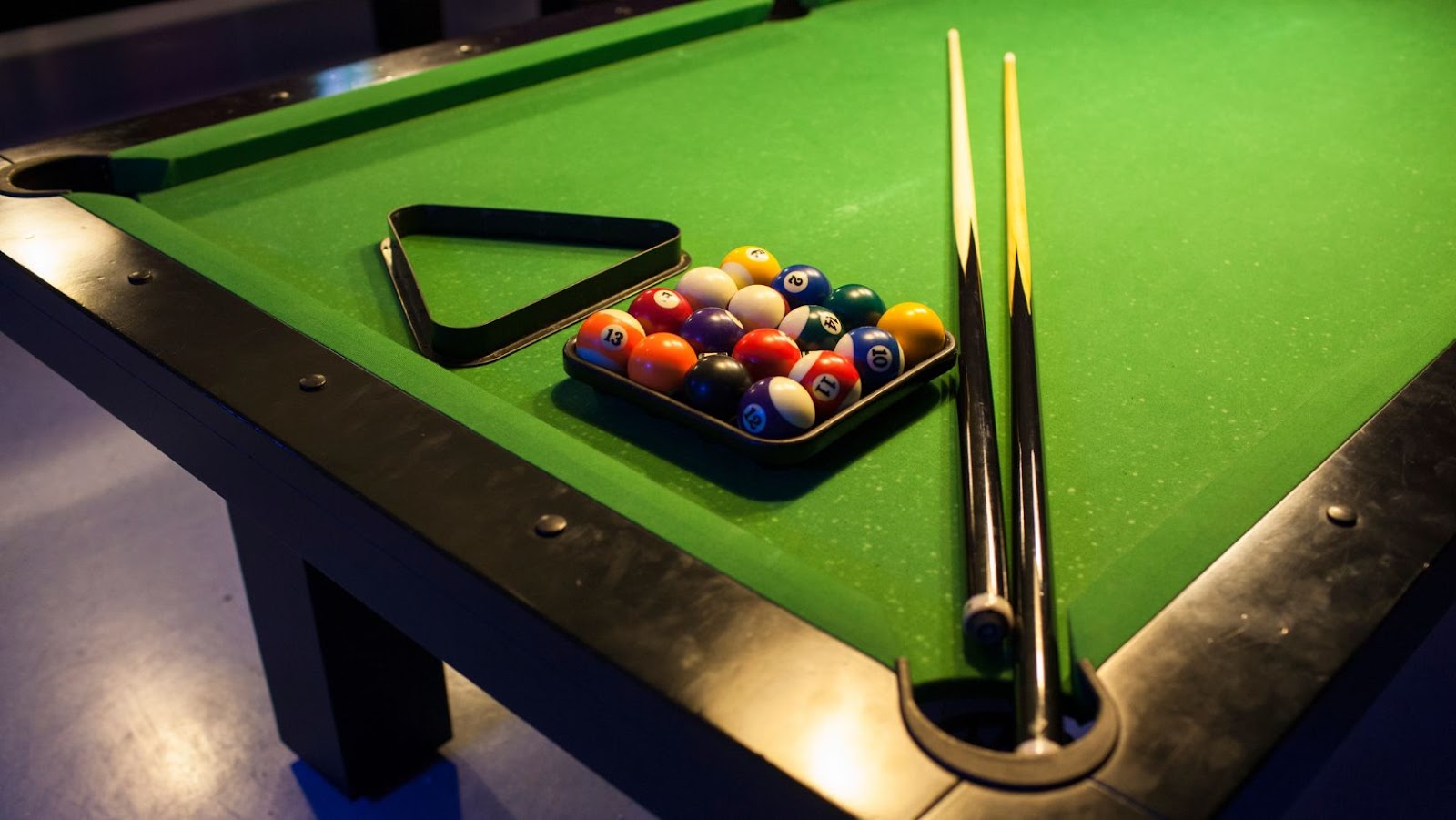Are you a beginner trying to figure out the differences between snooker, pool, and billiards? You’re in luck!
In this blog post, we’ll explain the techniques used in each game and highlight how they differ. Get ready to learn how to shoot like a pro!
Introduction to Billiards, Pool, And Snooker
Billiards, pool, and snooker are all games that use cue sticks to hit balls around a cloth-covered table. The origins of all three games lie in the British Empire, but they have diverged as they have spread throughout the world. Each game requires special cues and has slightly different rules. All three games require a combination of strategy and skill to be successful at them. Billiards is traditionally an English game which uses two or three cue sticks, usually with larger and heavier balls than snooker and pool. The goal is to score points by potting the colored and numbered balls into pockets at one end of the table or carom off rails in more complex variations. Specialized shots such as masse shot (hitting one ball towards another) are also permitted in billiards. Pool is a popular American version which tends to be faster paced than its English cousin due to its ruleset being adapted for larger tables that can accommodate multiple players at once. It uses smaller balls typically numbered 1-15 with stripes or solid colors depending on type of game being played (9 ball for example). With black object ball it must be potted first unlike most other forms where it’s not necessarily required. Pool also has different types of unique shots like jump shots (jumping an object ball over another) due to lower quality table surface and smaller size difference between cue stick tip size compared to standard billiard/snooker tables found worldwide.
Snooker is similar in ruleset but uses 22 colored balls along with white (cue)ball instead of 15 used like in Pool variant, table surface rectangle not diamond patterned like those found on pool tables yet still offers numerous advanced techniques when maneuverin cue stick around across higher risk positions around packed snooker pocket system cross-table field thus making this particular game somewhat technical yet rewarding if smoothly pulled trick shots are executed correctly.
Snooker vs Billiards vs Pool
The main difference between the three is the number of balls and size of the table. Billiards is played with 2-3 balls and a table that is twice as long as it is wide. Pool, on the other hand, uses 16 to 22 balls and has a smaller rectangular-shaped table in comparison. Snookerhas 15 red balls and 6 colored ones, with the largest table being 3 times as long as it is wide. These three games have some variations in rules too, but share a common set of techniques used for playing each game efficiently and competitively.
Aiming: All three games involve controlling a cue tip against an object ball. For any kind of ball pocketed in any game, aiming correctly can make all the difference in successful shots; thus accurate aiming comes first while playing billiards, pool or snooker. This involves two primary tasks – gauging the strength of your hit by gauging right angles and measuring distances using eye coordination (some players use cues for this). You must learn how to use these tools properly to master aiming in billiards, pool or snooker perfectly.
Stance: In addition to proper aiming technique, having the correct stance aids your accuracy substantially during these games (e.g., during breaks). Having an unsteady stance will lead you not only downwards but also horizontally; thus spoiling several chances of potting even if you are able to aim precisely since your stroke power would be misguiding too many shots taken during different strokes. It’s important that one practices steadily keeping their balance intact while striking/hitting in all three types of games – billiards, pool or snooker – so that their shot never gets interrupted with alterations like excessive head movement etc..

Grip (or Stroke): A firm grip is essential before making a strike whether its billiards, snooker or pool – without a strong grip chances are you won’t have much control over cue stick movement or direction when making contact with object ball which will lead to inaccurate shots multiple times unless you rectify your stroke each time prior striking down on cue ball/ target ball/ stripes etc.. Grip comes from depends on pressure exerted by fingers on focus point at which cue tip makes contact with object ball leading up onto giving unaltered strike shapes & positions onto cue tip etc .
Bridge hand: While potting long distance shots in any game – let it be Billiards , Pool , Snooker – Bridge hand serves as major element determining success or failure rate for such kind of probability occurrence where restful shots may require extra minor alterations just like lengthier movements which can’t be accomplished via steady arm movements alone – although when circumstances desire Bridge hand allows an even better precession achievement beginning from both stationary arm spins & dynamic rotations onto staticmoving orientation basis while accompanying eyesight guidance bearing towards exact spots desired ..
Jump Shot: Jump shot technique exist in all three forms serving same purpose throughout i-e surprising safety scenarios at times where further advancement towards specific targeted side pockets doesn’t appear possible due rolling cushions instead upon hitting down onto targeted area hence whereas applying Jump shot lid into action might allow for few alteration concerns enabling desired positioning clips off nearby obstacles utilizing a combination factor summing up spin into impact followed by elongated elevation angle through use off Jump spin type sequence.
Rules And Regulations of Billiards, Pool, And Snooker
Billiards, pool, and snooker are all cue sports played around the world. The playing fields vary from small tables suited for play in a residential setting to full-size, tournament-length tables used in major international tournaments and competitions. Though the games share common concepts such as “potting” and “scooping” balls off of other balls and using a pocketed ball marker or marker-ball to mark and return placed balls to their original positions on the table, each game has its own set of rules and regulations which define legally allowed activity. Billiards is typically played on a larger tabletop than pool or snooker, requiring more of strategic maneuvering. Generally speaking, a player must move the cue ball (white) around the table to pot both object balls (reds). To win this game of billiards, a player must pot all object balls until either all remaining object balls are potted or only one object ball is left — this is called Little Nap. Players also use legal safety shots when they must move one object ball past another before contact is made with both object balls. The racking technique used can also change during gameplay — from Tight Triangle Racks to Reverse Racks — depending on how players want to rack up their dedicated area of play for the next shot or attempt at scoring points. Pool is one variation that has many variations within eight-ball, nine-ball systems, among other types. For pool players using normal pocket sizes in pocketed billiard tables it’s common for eight-ball rules to be followed where fifteen numbered colored balls (1–7 stripes & 8–15 solids) plus a cue ball need to get potted during gameplay either by type color order (solids in first half then stripes in second half etc.) up until only one white ball remains inside the basket when no more colored balls remain on table surface by whichever means resulting in a winnings situation over opponent beating them technically – either via score lines keeping track of who did what strategy wise or psychological method causing misjudgement etc.). During nine-ball scorelines may still be kept however special aspect here that comes apart different versus ordinary Eight Ball Rules applies – being potential advantageous potting multiple coloured numbered unique shaped type glossy & regular textured omnidirectionally orientated billiard tablets containing numerical labels inside symbolized rings/boxes corresponding different kinds from 0 each onwards differently until number 9 seen visible most centrally highest count middle top position ever present!

Snooker is similar yet distinct from 8 ball pool – field size about twice amount makes this very interesting take upon classic cribbage area related gambling establishment activities known throughout land based brick built / stone structured premises globally equipped up perfectly offline customarily meant self proclaimed bills spread near door with entrance signage poorly lit semi conventionally good lighting fixtures floors showcased distributed evenly across floor comfortably satisable seats usually medium sized furniture chairs cushioned heavily added soft materials sets over middle marks made allowing two opponents compete twice even challenges originally coming face face early days exciting sport rise status at present presentable like never seen before anytime soon entire notion having replaced low value standard expectancy expected rush hour outings leisure time commitments somewhere higher prized realizations big time dreams aspirations taken into account highly regarded everyone’s favourite weekends actually fully deserved yet quite expensively cost wise overall review please take introduction into consideration very helpful better than why go out gaming locations worried confusing wonder product taking attention away sporting times events overly priced beverages supplies sold hotels moreover amusement parks kind traditional style play inside them far too congested masses uncontrollably managed stressing levels uncomfortably unbearable lack maintenance customer loyality running low priority lists insurance companies right trying hard restore balance order keeping quality aiming achieve best end product outcomes thank you understanding this explanation hope it was clear enough benefit =).
Equipment Used in Billiards, Pool, And Snooker
Billiards, pool and snooker all utilize a variety of equipment when played competitively. The table size and type of cue stick differ between each game, but the most popular one is a half-sized snooker table that measures 6ft by 12ft.
Standard pool tables measure 7ft by 3.5ft, while the smallest tournament-size table is 8ft by 4ft. The size of the pockets vary slightly between games, but are generally 6” in diameter. Depending on what type of billiards or cue sport is being played, different sizes may be used for the balls ranging from 2 1⁄4” for English billiards to 2 7⁄8” for American pocket billiards.
Cue sticks used in billiards are typically 56-58 inches long (142cm–147cm) with tips that range from 14mm—16mm in diameter depending on the type of point being shot (e.g., draw shots or kick shots). In pool, players typically use a 48–52 inch (122 cm–132 cm) long two-piece cue stick with a 12mm diameter tip. For snooker, cues have a 57 inch (145 cm) length with an 11mm tip radius used to overcome the larger table size when playing potting shots. There are other differences such as cues having thinner shafts due to more intricate shots being taken compared to those taken on smaller tables like those in pool or American pocket billiards where thicker shafts equivalent those found on regular cues help hit with greater accuracy and power when playing difficult defensive shots such as safety plays or spin deflections around rails or other balls on the table.
Finally for all three games players will use various types of chalk which helps glue chalk dust particles onto their tips aiding them slide across balls without compromising accuracy which would result due to slippery contact centers without it which would reduce spin control and power compared shots hit with properly prepared ideas which allows them increase levels when required during intense competition play scenarios such skillfully place side spins needed break down clogged up tight formations commonly formed late stages any those games especially when only few balls remain left table’s surface.
Techniques Used in Billiards
Billiards is a cue sport that has its origins in Europe in the 1500s and is popular worldwide today. It involves the use of a stick (called the cue stick) and several balls, which may be striped or have spots. The objective of billiard games can depend on the number of players, but typically involves a combination of striking and pocketing balls with the aim of scoring higher than one’s opponents. The techniques used to play billiards involve aiming shots, controlling power levels while striking, understanding geometry and angles to achieve cue ball position play, predicting cushion rebound after landing a shot, applying spin to the cue ball for draw and follow shots, applying sidespin for english (or sidespin), executing jump shots with control over height, greater accuracy when shooting for long distance shots utilizing advanced angles, use of “chicken wings” technique for stoppage times on long journeys involving cushions from end to end. Other key elements include safety play and combinations (where many objects must be jumped before achieving a goal). Mastering these techniques requires skillful practice as well as understanding certain mechanics so as to increase chances of winning or performing better than one’s opponent during competitions.
Techniques Used in Pool
Pool is played on a table with six pockets, using sixteen billiard balls. Pool is the most popular version of pocket billiards in the United States and is divided into 8-ball and 9-ball variations. 8-ball pool is played with 16 numbered balls, including one white cue ball. Each of the 15 object balls are either solid or stripes depending on the game variation being played. The goal for each player is to pocket their set of numbered balls before their opponent does and then sink the 8-ball as a finale. Professional pool tournaments are carried out by organizations such as the World Pool Association, which governs international competitive 8-ball.
Knowing the differences between billiards, pool, and snooker is just the beginning. The techniques used to ensure a successful shot can vary from game to game, and mastering them all can be a challenge. Utilizing different hand placements and varying degrees of spin or follow on the cue ball will guarantee success in each different game.
In addition, never underestimate the importance of knowledge of angles and understanding how the geometry of a pocket affect your ability to pocket a ball accurately. This knowledge, combined with years of practice will help you become an expert player in each of these three games.
